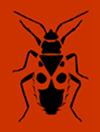欧洲各地暗纹果蝇线粒体DNA的变异
IF 1.3
3区 农林科学
Q2 Agricultural and Biological Sciences
引用次数: 1
摘要
暗纹果蝇是一种常见的果蝇,栖息在欧洲的温带森林中。虽然与其他果蝇相比,它在北方很丰富,但它的密度向南下降,在那里它逐渐被其他果蝇物种取代。这项研究描述了来自几个欧洲群体的暗纹夜蛾线粒体Cyt b基因的变异。我们观察到大量的单倍型,以及遗传变异的结构。遗传变异在O1和相关的分化单倍型占主导地位的西方更高。在东部,O2单倍型和最近出现的单倍型最为常见。在物种范围的中部,O1和O2以及许多其他单倍型都同样存在。这些数据揭示了人口扩张的迹象,这种扩张可能发生在西方早期,也可能发生在东方。尽管我们的结论仅基于一个遗传标记,限制了分析的能力,但结果表明,要么是来自两个独特来源的冰川后扩张,要么更有可能是向东扩张的垫脚石。这项研究为D.obscura的模糊生物学增加了关于遗传变异和系统地理学的重要信息,D.obscula是一个有可能成为进化生物学和保护遗传学中有趣的模型的物种。*目前的地址:埃克塞特大学生命与环境科学学院,Penryn校区,英国康沃尔TR10 9FE;电子邮件:M.A.Wallace@exeter.ac.uk简介蒙昧果蝇(Drosophila obscura)是一种泛北极果蝇,其分布范围从南欧延伸到芬诺斯坎迪亚中部,从西欧延伸到中亚(Lakovaara和Saura,1971;Brehm和Krimbas,1991年)。在欧洲,其相对丰度从北向南递减(Brehm&Krimbas,1991)。在芬兰南部,它是最丰富的果蝇物种(Lakovaara和Saura,1971)。与D.subobscura一样,D.obscura是英国最常见的两种果蝇之一,尽管D.subobsecura在大多数月份的数量都超过了它(Shorrocks,1975;Begon,1978)。在中巴尔干地区,在蒙昧动物群物种中,它的数量远不如近布氏D.(Stanićet al.,2002;Pavković-Lučić等人,2012),但在更高的海拔地区很容易被收集到(长期观察Eur.J.Entomol.199:99-1102022 doi:10.1441/ej.202.011本文章由计算机程序翻译,如有差异,请以英文原文为准。
Mitochondrial DNA variation of Drosophila obscura (Diptera: Drosophilidae) across Europe
Drosophila obscura is a common fruit fl y that inhabits the temperate forests of Europe. While it is abundant in the north compared to other Drosophila, its density decreases southwards, where it is gradually replaced by other Drosophila species. This study describes variation in the mitochondrial Cyt b gene of D. obscura from several European populations. We observed a large number of haplotypes, together with the structuring of genetic variation. Genetic variation is higher in the west where O1 and related divergent haplotypes dominate. In the east, the O2 haplotype is most frequent, together with haplotypes that recently arose from it. In the central part of the species range, both O1 and O2 are equally present, along with many others. These data reveal signs of population expansions that probably happened earlier in the west, and more recently in the east. Though our conclusions are based on only one genetic marker, limiting the power of the analysis, the results imply either postglacial expansion from two unique sources or, more likely, eastwards stepping-stone expansion. This study adds important information on genetic variation and phylogeography to the obscure biology of D. obscura, a species that has the potential to become an interesting model in evolutionary biology and conservation genetics. * Current address: College of Life and Environmental Sciences, University of Exeter, Penryn Campus, Cornwall TR10 9FE, UK; email: M.A.Wallace@exeter.ac.uk INTRODUCTION Drosophila obscura, the nominate species of the obscura group, is a Palearctic fruit fl y whose distribution extends from Southern Europe to the central Fennoscandia, and from Western Europe to central Asia (Lakovaara & Saura, 1971; Brehm & Krimbas, 1991). In Europe, its relative abundance decreases from north to south (Brehm & Krimbas, 1991). In southern Finland, it is the most abundant Drosophila species (Lakovaara & Saura, 1971). Along with D. subobscura, D. obscura is the one of the two most common Drosophila species in Great Britain, although D. subobscura outnumbers it during most months (Shorrocks, 1975; Begon, 1978). In the Central Balkans, among obscura group species, it is much less abundant than D. subobscura (Stanić et al., 2002; Pavković-Lučić et al., 2012), but is readily collected at higher altitudes (long-term observaEur. J. Entomol. 119: 99–110, 2022 doi: 10.14411/eje.2022.011
求助全文
通过发布文献求助,成功后即可免费获取论文全文。
去求助
来源期刊
CiteScore
2.30
自引率
7.70%
发文量
43
审稿时长
6-12 weeks
期刊介绍:
EJE publishes original articles, reviews and points of view on all aspects of entomology. There are no restrictions on geographic region or taxon (Myriapoda, Chelicerata and terrestrial Crustacea included). Comprehensive studies and comparative/experimental approaches are preferred and the following types of manuscripts will usually be declined:
- Descriptive alpha-taxonomic studies unless the paper is markedly comprehensive/revisional taxonomically or regionally, and/or significantly improves our knowledge of comparative morphology, relationships or biogeography of the higher taxon concerned;
- Other purely or predominantly descriptive or enumerative papers [such as (ultra)structural and functional details, life tables, host records, distributional records and faunistic surveys, compiled checklists, etc.] unless they are exceptionally comprehensive or concern data or taxa of particular entomological (e.g., phylogenetic) interest;
- Papers evaluating the effect of chemicals (including pesticides, plant extracts, attractants or repellents, etc.), irradiation, pathogens, or dealing with other data of predominantly agro-economic impact without general entomological relevance.

 求助内容:
求助内容: 应助结果提醒方式:
应助结果提醒方式:


